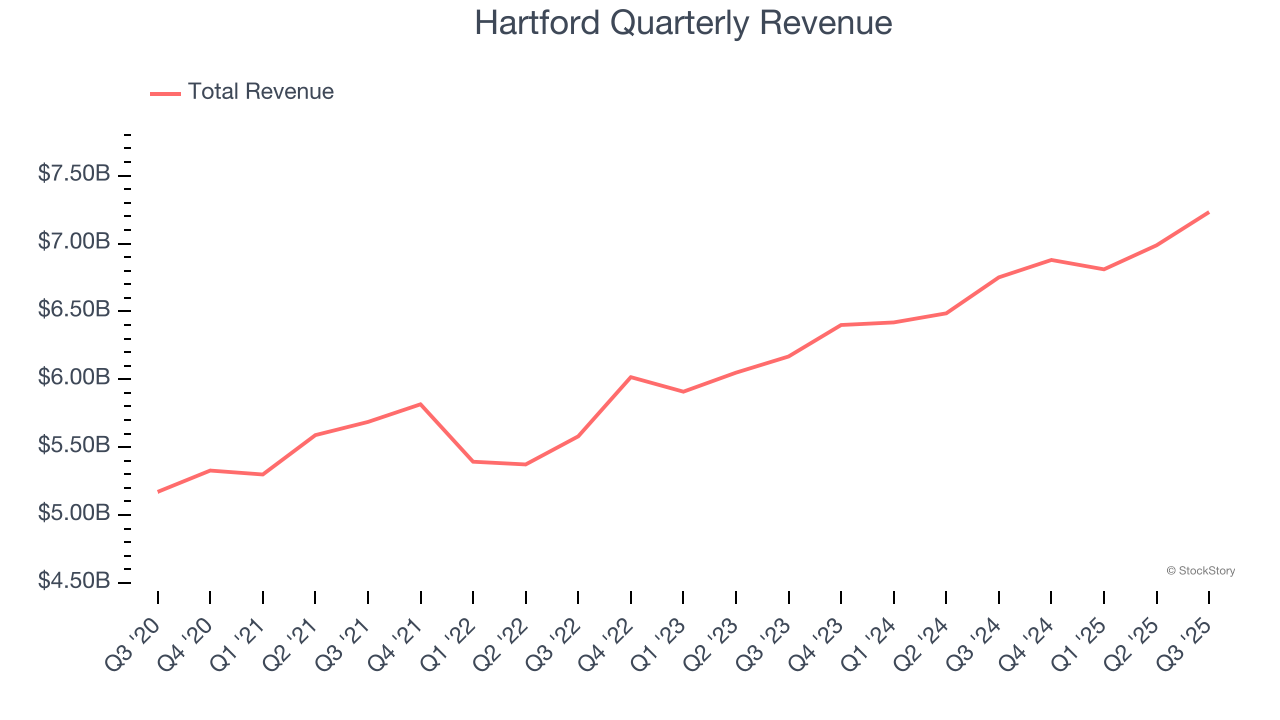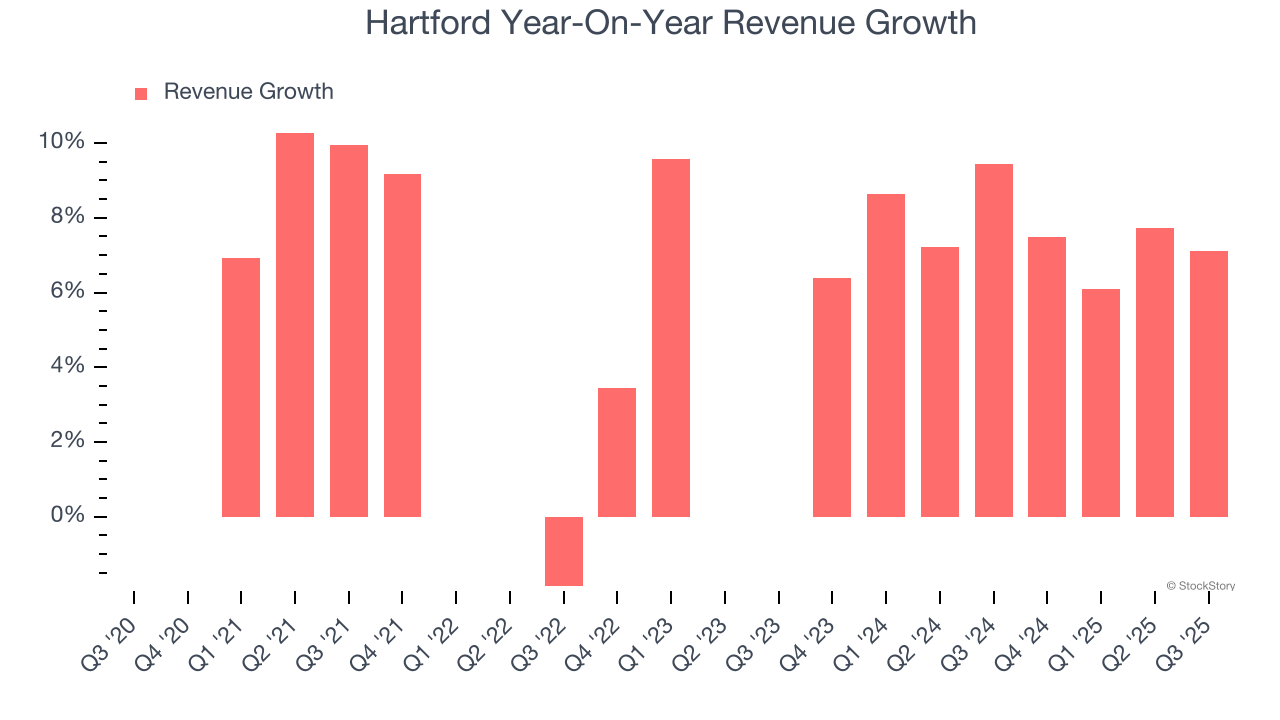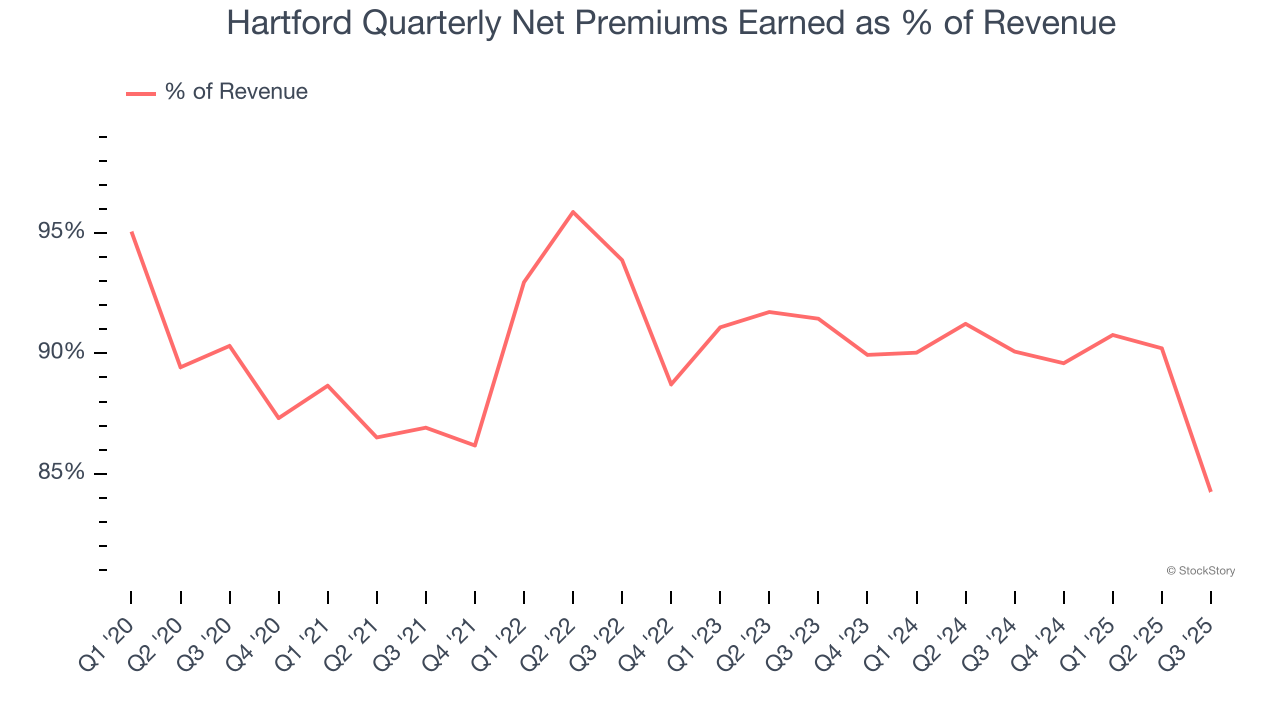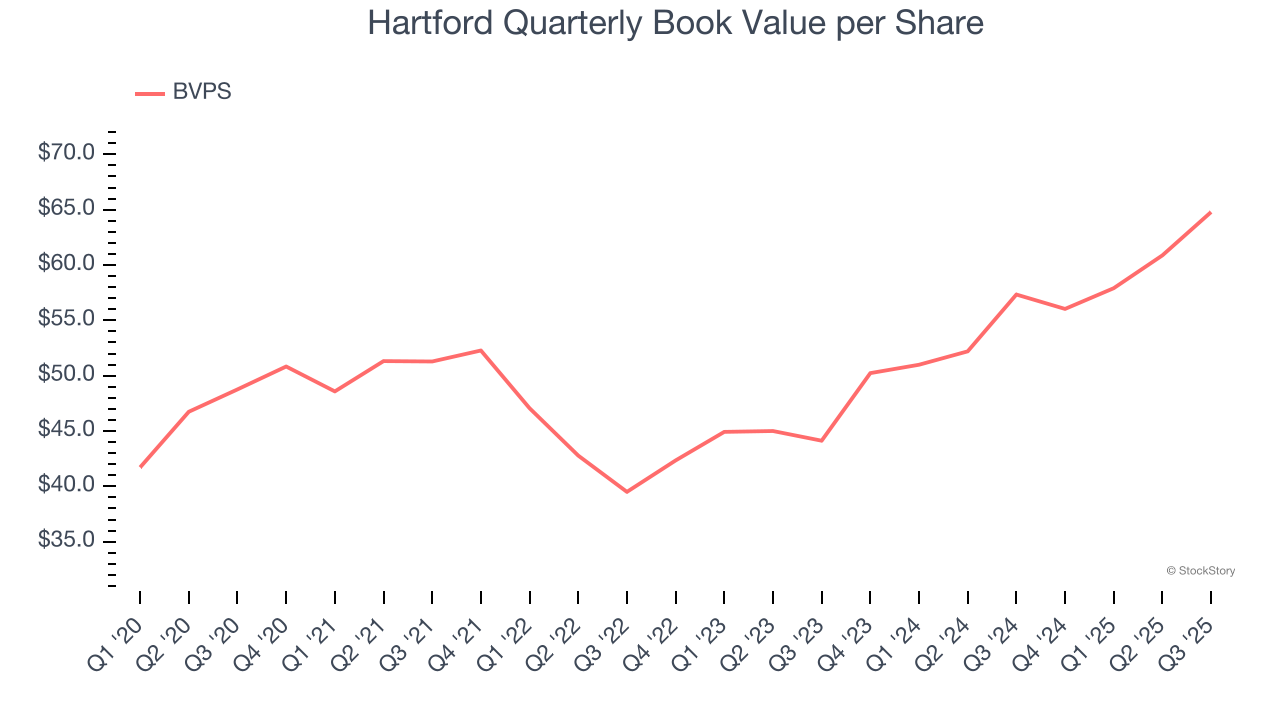
Insurance and financial services company The Hartford (NYSE: HIG) reported Q3 CY2025 results beating Wall Street’s revenue expectations, with sales up 7.1% year on year to $7.23 billion. Its non-GAAP profit of $3.78 per share was 17.6% above analysts’ consensus estimates.
Is now the time to buy Hartford? Find out by accessing our full research report, it’s free for active Edge members.
Hartford (HIG) Q3 CY2025 Highlights:
- Net Premiums Earned: $6.09 billion vs analyst estimates of $4.49 billion (flat year on year, 35.8% beat)
- Revenue: $7.23 billion vs analyst estimates of $7.14 billion (7.1% year-on-year growth, 1.2% beat)
- Combined Ratio: 87.9% vs analyst estimates of 89.7% (181.3 basis point beat)
- Adjusted EPS: $3.78 vs analyst estimates of $3.21 (17.6% beat)
- Book Value per Share: $64.79 vs analyst estimates of $70.42 (13% year-on-year growth, 8% miss)
- Market Capitalization: $35.18 billion
Company Overview
Recognizable by its iconic stag logo that dates back to 1810, The Hartford (NYSE: HIG) provides property and casualty insurance, group benefits, and investment products to individuals and businesses across the United States.
Revenue Growth
In general, insurance companies earn revenue from three primary sources. The first is the core insurance business itself, often called underwriting and represented in the income statement as premiums earned. The second source is investment income from investing the “float” (premiums collected upfront not yet paid out as claims) in assets such as fixed-income assets and equities. The third is fees from various sources such as policy administration, annuities, or other value-added services. Regrettably, Hartford’s revenue grew at a mediocre 6.3% compounded annual growth rate over the last five years. This fell short of our benchmark for the insurance sector and is a poor baseline for our analysis.

We at StockStory place the most emphasis on long-term growth, but within financials, a half-decade historical view may miss recent interest rate changes, market returns, and industry trends. Hartford’s annualized revenue growth of 7.5% over the last two years is above its five-year trend, suggesting some bright spots.  Note: Quarters not shown were determined to be outliers, impacted by outsized investment gains/losses that are not indicative of the recurring fundamentals of the business.
Note: Quarters not shown were determined to be outliers, impacted by outsized investment gains/losses that are not indicative of the recurring fundamentals of the business.
This quarter, Hartford reported year-on-year revenue growth of 7.1%, and its $7.23 billion of revenue exceeded Wall Street’s estimates by 1.2%.
Net premiums earned made up 89.8% of the company’s total revenue during the last five years, meaning Hartford barely relies on non-insurance activities to drive its overall growth.

Markets consistently prioritize net premiums earned growth over investment and fee income, recognizing its superior quality as a core indicator of the company’s underwriting success and market penetration.
Today’s young investors won’t have read the timeless lessons in Gorilla Game: Picking Winners In High Technology because it was written more than 20 years ago when Microsoft and Apple were first establishing their supremacy. But if we apply the same principles, then enterprise software stocks leveraging their own generative AI capabilities may well be the Gorillas of the future. So, in that spirit, we are excited to present our Special Free Report on a profitable, fast-growing enterprise software stock that is already riding the automation wave and looking to catch the generative AI next.
Book Value Per Share (BVPS)
Insurance companies are balance sheet businesses, collecting premiums upfront and paying out claims over time. The float–premiums collected but not yet paid out–are invested, creating an asset base supported by a liability structure. Book value per share (BVPS) captures this dynamic by measuring these assets (investment portfolio, cash, reinsurance recoverables) less liabilities (claim reserves, debt, future policy benefits). BVPS is essentially the residual value for shareholders.
We therefore consider BVPS very important to track for insurers and a metric that sheds light on business quality. While other (and more commonly known) per-share metrics like EPS can sometimes be lumpy due to reserve releases or one-time items and can be managed or skewed while still following accounting rules, BVPS reflects long-term capital growth and is harder to manipulate.
Hartford’s BVPS grew at a tepid 5.8% annual clip over the last five years. However, BVPS growth has accelerated recently, growing by 21.2% annually over the last two years from $44.12 to $64.79 per share.

Over the next 12 months, Consensus estimates call for Hartford’s BVPS to grow by 19.6% to $70.42, elite growth rate.
Key Takeaways from Hartford’s Q3 Results
We were impressed by how significantly Hartford blew past analysts’ net premiums earned expectations this quarter. We were also glad its EPS outperformed Wall Street’s estimates. On the other hand, its book value per share missed. Overall, this print had some key positives. The stock remained flat at $125.50 immediately after reporting.
Hartford put up rock-solid earnings, but one quarter doesn’t necessarily make the stock a buy. Let’s see if this is a good investment. What happened in the latest quarter matters, but not as much as longer-term business quality and valuation, when deciding whether to invest in this stock. We cover that in our actionable full research report which you can read here, it’s free for active Edge members.






